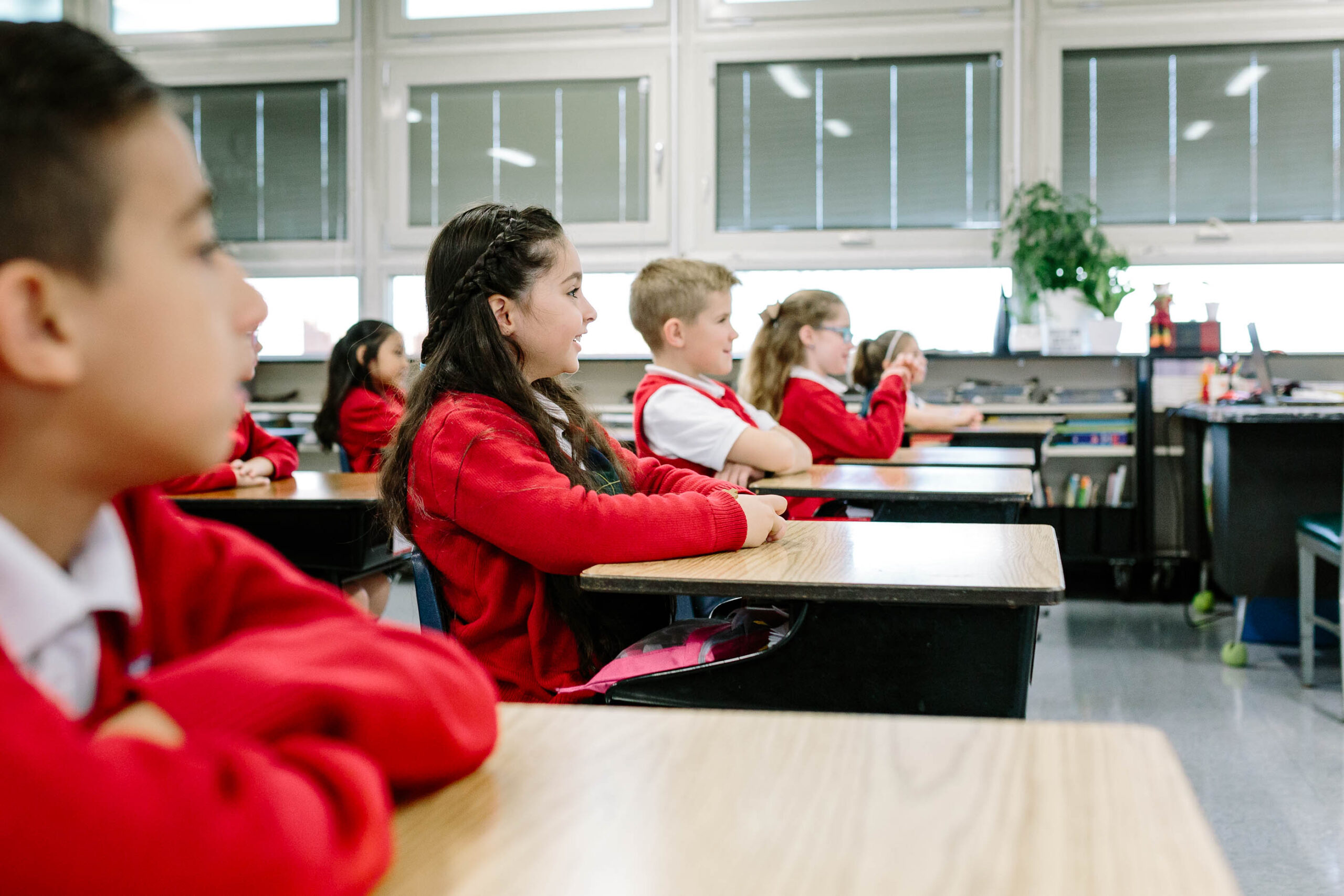Knowledge
Our strong academic curriculum and wholesome, intentionally low-tech learning environment develop confident and capable learners.

Curriculum (Grades K-5)
Mathematics
The Singapore Dimensions curriculum at Embers emphasizes strong mathematical problem-solving. Using this world-class, proven method, Singapore provides a conceptual understanding of math and number sense, and gives them an experiential, hands-on introduction to concepts through the use of manipulatives in all grades, sequencing instruction from the concrete, to the pictorial, to the abstract.
Language Arts
Kindergarten-2nd Grade
Embers’ reading instruction emphasizes building phonological and phonemic awareness, comprehension, and decoding skills, leading students to be skilled and fluent readers. We utilize The Superkids Reading Program (Zaner-Bloser), a highly-rated and comprehensive English language arts curriculum based on the science of reading. Our students are on track to be proficient readers by the end of 1st Grade. Handwriting skills are cultivated throughout the program, and 2nd Grade students begin learning cursive in the second half of the school year.
3rd-5th Grade
The foundation of our language arts program is the Institute for Excellence in Writing’s (IEW) Structure and Style and Fix It! Grammar curricula. Students are taught through a structured, sequential approach to writing instruction, which emphasizes cohesive writing, reading comprehension, vocabulary development, critical thinking skills, and English grammar.
Literature
Classic novel studies and structured comprehension strategy instruction form the basis of the reading curriculum. Through reading classic literature, students expand their virtue knowledge, develop reading fluency, cultivate vocabulary skills, and deepen their comprehension. Highlights from novel studies include the Chronicles of Narnia (C.S. Lewis), Little House on the Prairie series selections, (Laura Ingalls Wilder), The Secret Garden (Frances Hodgson Burnett), The Little Prince (Antoine de Saint-Exupéry), and Don Quixote (Miguel de Cervantes).
Religion
The aim of our Religion program is to foster in our students a personal encounter with Christ and to establish the intellectual foundation by which they can understand and live out their faith.
Science
The Mystery Science curriculum, designed to align with the Next Generation Science Standards (NGSS), offers an enengaging and immersive science experience. Students learn science concepts through class discussions, directed readings, and interactive investigations. This dynamic and engaging curriculum inspires students to wonder about the world around them so they can develop a love for Science.
History and Geography
Students are introduced to foundational concepts of ancient civilizations, American history, geographic knowledge, and map skills with the Core Knowledge curriculum through 4th Grade. In 5th Grade, students use selections from Memoria Press and Hillsdale 1776 Curriculum.
Enrichment
Our students’ educational experience is further enhanced by enrichment courses in Art, Catechesis of the Good Shepherd, Motor Lab, Music, Physical Education, and Spanish
Low-Tech Environment
Our learning environment is intentionally low-tech, based on evidence that excessive screen time and over-stimulation in the learning environment are counterproductive to cognitive and social development. We encourage parents to be purposeful in their children’s use of technology at home and keep elementary-aged children off social media and chat rooms.
Standardized Assessment
Every March, all 3rd – 5th-Grade students take a yearly assessment. These tests assess Embers students in all areas of Reading, Language Arts, and Math. Consistent high standardized test scores demonstrate that our curriculum achieves the desired results.
